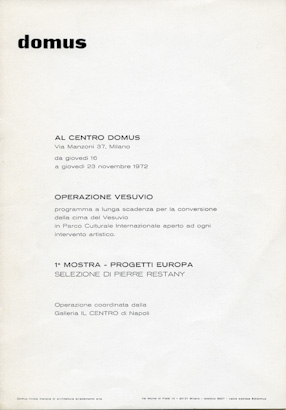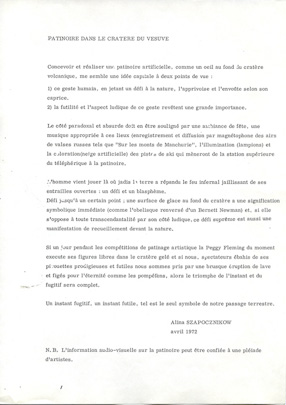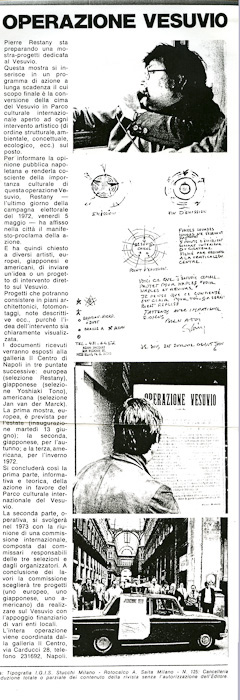Operazione Vesuvio (1-5/5)
In 1972 Pierre Restany organized at Galeria Il Centro in Naples a display of projects of a park at the top of Mount Vesuvius. Alina Szapocznikow proposed to build an ice skating rink in the crater of the volcano, the meaning of which she explained in a text accompanying the work.
Gustaw Herling-Grudziński, who lived in Naples at that time, wrote in his diary on 23 June 1972, “I left for the post office early in the morning. When I passed the gate, I froze: on the wall there was a fresh huge poster with the title Operazione Vesuvio. For us, inhabitants of Naples, any public announcement about the Volcano towering ominously over the city is no joke. I calmed down when I read further: it was not from the mayor but a renowned Parisian art critic, Pierre Restany. […] There is also a Polish project included. Madame Alina Szapocznikow wishes to have the bottom of the crater turned into an artificial ice-skating rink: people would skate to the accompaniment of “Sur le monts de Manchurie”. Who (except for me, of course) will understand the Polish character and the political allusion of our compatriot’s project?”
(Gustaw Herling-Grudziński, Dziennik pisany nocą 1971-1972 [Diary Written at Night. 1971-1972]. Warsaw: Res Publica, 1990; pp. 130,132)
The music piece proposed by the artist is the waltz “The Hills of Manchuria” composed in 1906- 1907 by Ilya Shatrov, and refers to a battle which changed the course of the Russian-Japanese war, in which both sides suffered enormous losses.




